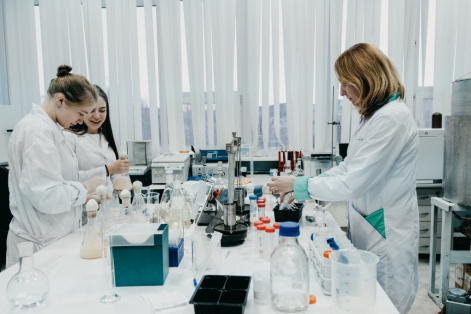A newly discovered strain of bacteria can synthesize degradable polymers
10 December 2021 г.

Degradable polymers of hydroxy-derivatives of alkanoic acids or polyhydroxyalkanoates are considered candidates for the gradual replacement of widely used non-degradable synthetic polymers that pollute the environment. Polyhydroxyalkanoates have valuable properties such as biocompatibility and biodegradability. They belong to biomaterials with a variety of applications, from urban construction and agriculture to pharmacology and biomedicine. In particular, bacteria of the genus Cupriavidus can accumulate these substances in high concentrations in their biomass. However, most representatives of this group of microorganisms are able to rapidly develop only on sugars and synthesize only short-chain polymers.
A team of Krasnoyarsk scientists from the Federal Research Center "KSC SB RAS" and Siberian Federal University discovered and extracted a new strain of bacteria which can grow on various available carbon sources and synthesize polymers with different chemical compositions and characteristics from sugars, glycerin, fatty acids and vegetable oils.
As a "raw material" for the synthesis of polymer by the new bacteria, the researchers tested various carbon sources, including fructose and glucose, refined glycerin, vegetable oils, including refined sunflower and bleached refined deodorized palm oil, as well as fatty acids, for example, palmitic, myristic, lauric and oleic acids.
All sources were suitable substrates for the growth of the new strain and polymer synthesis, although the accumulation rate of the valuable compound somewhat varied. The highest concentrations of polyhydroxyalkanoate in cells, about 80%, were obtained in cultures with palm oil and oleic acid as carbon sources. The results obtained for the "control" fructose and glucose hardly differed, and were also close to 80%. The cultivation on purified glycerin gave lower results, as the content of the intracellular polymer was lower by about a quarter. The accumulation parameters for saturated fatty acids and sunflower oil were even lower.
As a result of the study, the scientists also found out that the type of carbon source influenced the chemistry and properties of the polymers. Thus, the new bacterial strain Cupriavidus necator IBP / SFU-1 is capable of synthesizing short and medium chain polymers.
“Our results have shown that the recently extracted natural strain Cupriavidus necator IBP / SFU-1 is capable of synthesizing polymers not only on fructose, but also on various organic substrates: glucose, fatty acids, vegetable oils and glycerin. Moreover, replacing sugar sources with any other carbon sources used in our study did not lead to adaptation and slowing of the cell growth. This is an undoubful advantage of the new strain over other known Cupriavidus species, some of which are unable to absorb glucose or palm oil, and need a long time to adapt to other carbon sources after “re-seeding” from sugar-containing media. The new strain can be recommended as a promising producer of polyhydroxyalkanoates from palm oil, oleic acid and sugars, fructose and glucose, ” said Natalya Zhila, Candidate of Biological Sciences, a senior researcher at the Institute of Biophysics of the Krasnoyarsk Scientific Center SB RAS.
Share:
